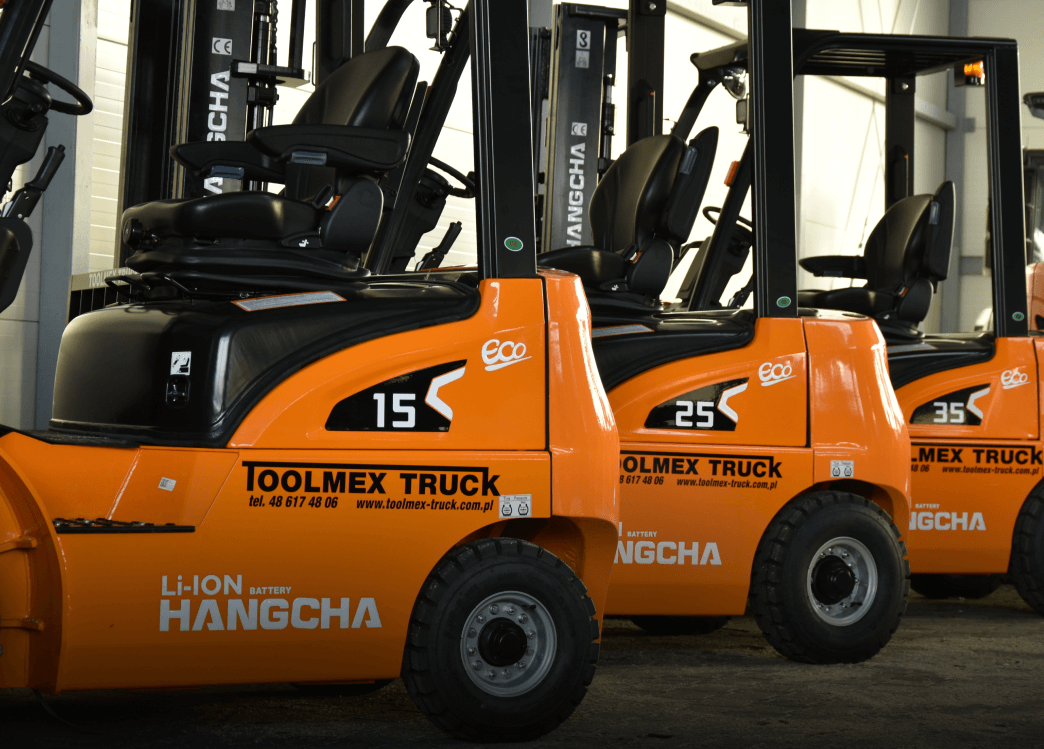In today’s dynamic business environment, where speed and logistics efficiency determine competitive advantage, small and medium-sized enterprises face the challenge of ensuring operational efficiency without straining their budgets. One solution that can significantly enhance efficiency is the use of forklifts. Discover how proper utilization of forklifts can contribute to increasing your company’s productivity.
Forklifts in Small and Medium Enterprises – Why They Are Essential?
Forklifts are not just equipment for large warehouses or logistics centers. Small and medium-sized enterprises across various industries can also benefit from their use. Here are some key reasons:
1. Increased Work Efficiency
Forklifts significantly accelerate the loading and unloading processes, which is particularly important for small and medium-sized enterprises, where every time-saving measure translates to increased efficiency. Manually moving heavy loads not only takes more time but also carries the risk of errors and damage to goods.
2. Optimization of Storage Space
With forklifts, businesses can better utilize their available storage space by employing high racks and stacking goods vertically. This allows for increased storage capacity without the need to invest in additional space, which is crucial for smaller enterprises often operating in limited areas.
3. Safety at the Workplace
Proper use of forklifts in accordance with health and safety regulations reduces the risk of accidents and injuries in the workplace. Forklifts are designed to safely transport heavy and unwieldy loads, which lessens the physical burden on employees and protects their health. For more information on workplace safety with forklifts, check our previous post, available HERE.
4. Operational Flexibility
The variety of forklift models available on the market means that every business can find a solution tailored to its specific needs. Whether a heavy-duty forklift for transporting heavy materials is needed or a compact model for tight spaces, companies can configure their fleet of forklifts to best support their operations.
5. Support for Specialized Tasks
In some industries, such as construction, manufacturing, or processing, forklifts can be used for specialized tasks, such as lifting and transporting hazardous materials or handling loads with unusual dimensions. Customizing a forklift to specific needs enables the efficient and safe execution of even the most complex tasks.
How to Choose the Right Forklift for Your Business?
Choosing the right forklift depends on several factors. Here’s what to consider:
1. Assess Operational Needs
The first step in selecting a forklift is a thorough assessment of the business’s operational needs. Consider what tasks the forklift will perform, what loads it will transport, and how often it will be used. Will it operate mainly indoors or outdoors? What is the maximum weight and size of the loads it will handle? Answers to these questions will help determine the type and specifications of the forklift that best meets the company’s expectations.
2. Choose the Type of Power Source
Forklifts come with various power sources: electric, gas, diesel, or LPG. Each has its advantages and limitations. Electric forklifts are quiet, eco-friendly, and ideal for indoor work but may require frequent recharging. Internal combustion engine forklifts offer more power and are better suited for outdoor operations but produce emissions and can be louder.
3. Consider the Operational Space
The space where the forklift will operate is crucial when selecting a model. For tight warehouses with limited maneuvering space, electric forklifts, which are typically smaller and more maneuverable, may be ideal. For outdoor operations where space constraints are not an issue, larger internal combustion engine forklifts may be more appropriate. If you want to learn more, HERE you can find a comparison of internal combustion and electric forklifts.
4. Analyze Purchase and Operating Costs
The budget is a key factor in choosing a forklift. In addition to the purchase price, consider operating costs such as fuel, maintenance, and potential repairs. Electric forklifts may have a higher initial cost but often have lower operating costs and are more environmentally friendly compared to gas models.
5. Test Before Purchase
If possible, test the selected forklift models before making a purchase. Many companies offer rental or demonstration options, allowing for an evaluation of how a particular model performs in the company’s real operational conditions. This is an important step that can help avoid future disappointments and ensure that the investment fully meets business needs.
6. Consider Safety Features and Ergonomics
Safety and work ergonomics are extremely important when choosing a forklift. Look for models equipped with advanced safety systems, such as obstacle sensors, stability control systems, and LED lighting to improve visibility. Additionally, the ergonomics of the operator’s workspace, including seat adjustment, control layout, and visibility, are crucial for ensuring work comfort and minimizing the risk of injury and fatigue during prolonged use.
7. Analyze Service and Spare Parts Availability
Before purchasing a forklift, pay attention to the availability of technical service and spare parts. Choosing equipment from a reputable manufacturer or supplier with a well-developed service network ensures ease in maintaining the forklift in good technical condition. This, in turn, will lead to lower operating costs and extend the investment’s lifespan.
8. Consider Long-Term Decision Making
Remember that purchasing a forklift is a long-term investment. When selecting a model that best meets the current needs of the business, it’s also worth considering future growth and potential changes that may occur in operations. Flexibility, the ability to expand, and adaptability to changing work conditions are essential factors to take into account.
9. Consult Experts
Before making a decision, it’s advisable to consult suppliers or experts in the field of forklifts. They can offer valuable insights regarding the latest technologies, models, and best practices for maintaining and operating forklifts. Such consultations can also help in finding forklifts that best fit the specific needs of the business.





